Atlanta Braves 2016-2017 Top 100 Prospects 51-60

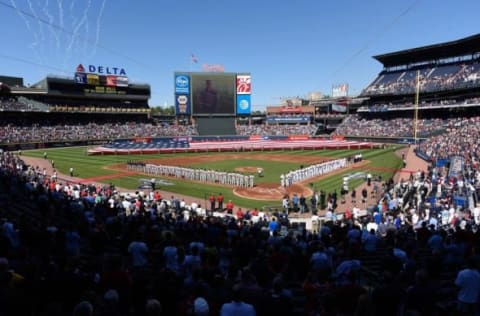
The Atlanta Braves have an incredible farm system, and Benjamin Chase has taken up Tomahawk Take’s minor league coverage of that system. This is his top 100 prospects in the Atlanta Braves system!
An Introduction
This is my second undertaking of an Atlanta Braves Top 100 Prospects list.
I will be honest – it was much tougher this season. Last year, I did consider just under 150 names that I considered as worthy of being on the top 100 list, but the qualifications were basically “did not look bad statistically” or “heard at least one positive thing”.
This year I knew was going to be much deeper, so I upped my personal requirements even for consideration, and I had 173 names on the initial list that I made to start sorting out from.
First, the methodology. This list is not a list of the guys who have the most talent from 1-100 as that wouldn’t tell us what we really want to know. This is an evaluation of who has the talent, the mental makeup, and the work ethic to turn their talent into a major league baseball player.
The reality is that of these 100 players, the Braves would be doing exceptionally well if 25 of them played more than a brief stint with the major league club. That part does need to be kept in mind as we continue through this list.
That does not mean that someone who is a #98 on this list can’t have a major league career. What I look at is the level of impact a player will have IF he does make the major leagues. A guy who will be an impact hitter or not make it at all will likely get rated higher than a guy who won’t make it as a starter or a late-inning reliever, but he has a good shot to be a major league middle reliever.
All players who have not exceeded rookie requirements are eligible for this list, even if they’ve played in the major leagues already.
I will have a post on Friday after the entire list is revealed that presents the list in a pure list format with no evaluation on each player for reference in the future. These posts will have more in-depth evaluation of each player in the list.
I also intend to update this list sometime before spring training begins with any off season acquisitions that the Braves make, so I won’t be updating the list as each trade/rule V pick/waiver claim is made, it will all be at that time.
With that said, let’s take a look at this post’s focus, #51-60 on the list!
Next: #60 & #59
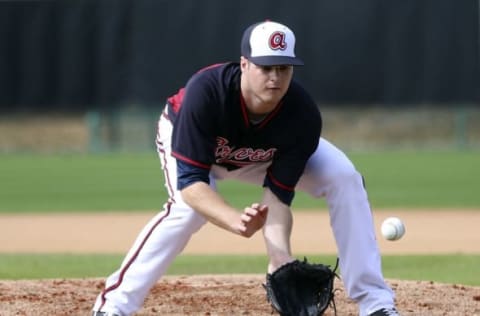
60. Jason Hursh, RHP
With the pedigree of being the Braves’ 1st round selection in 2013, Hursh has had high expectations for a long time. When he was moved to the bullpen full-time last season, many figured he’d be there for a time and eventually work his way back to the rotation. That was not the case in 2016 and won’t be going forward for the 25 year-old.
While his ERA wasn’t exactly pretty last season in the bullpen, Hursh was truly learning how to sequence his pitches in the bullpen, and he’s worked that out now. His 2 appearances with the Braves in the majors this summer weren’t pretty, but the rest of the year was very nice, showing a strong future for Hursh in the bullpen.
Hursh was a sinker/slider/change pitcher already as a starter, so his repertoire as a reliever didn’t really change much, though with the freedom to throw hard, Hursh didn’t add in a few MPH like many do going to the bullpen. Instead, he added depth and bite to both his sinker and his slider, making both incredibly difficult to square up. He overthrew both in his big league time in my viewing, and they straightened out, but he will be tremendous going forward.
Hursh did not allow a single home run at any level this season, but due to his pitches encouraging lots of contact, he ended up giving up some serious BABIP (.313 in AAA, .571 (!!) in MLB).
Hursh was still working to understand his new bite on his pitches from the bullpen, and he saw a higher walk rate than at any previous level at both AA and AAA this season due to the pitches moving out of the zone on him. He did see a higher strikeout rate in his time at AA than he’d had at any other level in his professional career, so the pitch was certainly effective!
Hursh may not work as a back-of-the-bullpen guy with his stuff, but he has a long future as a middle relief type that can go multiple innings. He should get a long look at the MLB bullpen this spring.
59. Justin Ellison, OF
Ellison was a Georgia native that the Braves drafted in the 12th round out of Western Oklahoma State College in the 2015 draft. He put his athleticism on display across the two rookie level teams in 2015 for theBraves, hitting .247/.313/.416 with 5 home runs and 6 stolen bases, posting an 18/37 BB/K ratio over 198 PA.
Ellison was moved to Rome this season, and he flashed power and speed today. He had 37 extra base hits and 18 steals along with a 37/88 BB/K over 476 plate appearances.
Ellison has some issue with streakiness in his hitting. He’ll go on a run where he’s collecting a hit or two or every night and driving the ball well, and then he’ll go into a slump where he goes a week or two without reaching base at all.
Ellison does provide enough defensive value in a corner outfield spot that he’s going to continue to have value even in his times when he’s not hitting well. He shows an above-average arm and good range.
The swing has the chance to improve and be a more consistent approach. At 21, Ellison is not ancient by any means. He has extremely strong wrists and an athletic core. If the Braves can shorten his swing and help him be more consistent in his path through the zone, Ellison’s natural power and speed could elevate him quickly in the outfield rankings.
Next: #58 & #57
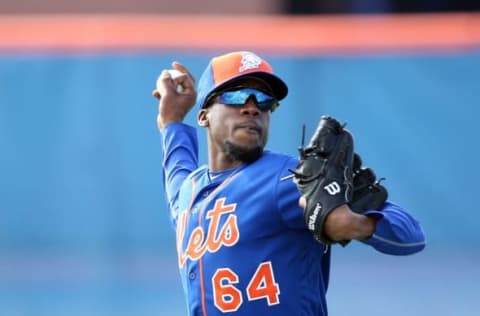
58. Akeel Morris, RHP
Morris was the acquisition from the Mets this season in the annual “Fleece the Mets for young pitching for Kelly Johnson” trade. The Mets moved Morris to the bullpen exclusively in 2014, and he’s been throwing well in that role since, even making an appearance in New York in 2015.
Morris has an over-the-top arm slot that adds a different look for hitters out of the bullpen. He primarily uses a fastball/change combination from his high arm slot, but he does also have a slurvy breaking pitch.
Morris’ high release point can get to be an issue, however, when he misses his landing point as his arm ends up dragging behind and it can flatten out out his pitches and hurt his ability to hit the zone. He has a very short load and a hard launch toward the plate, so it is an issue that he does miss his landing point a decent amount as well.
Morris will likely be at AAA to start 2017, and if he can keep his control in line, he could be a guy that works his way to Atlanta.
57. Luis Ovando, 2B/SS
Signed last season as an international free agent out of the Dominican Republic, Ovando got his professional start in 2015 and showed that there was more to the 2015 Braves IFA class than just Derian Cruz and Cristian Pache.
Ovando started his season with DSL, where he hit .263/.337/.366 with 5 triples and 7 steals. He also posted a 16/32 BB/K ratio over 196 plate appearances.
He was promoted in early August to GCL to bolster the bench and get spot starts in GCL, and he actually showed well in that role, hitting .306/.324/.333 with a steal and a 1/8 BB/K over 39 plate appearances.
Ovando is a second baseman most likely due to average arm strength, but he has the range and soft hands that he could play shortstop if he was needed by a club. His instincts are also above-average in the field, though he was learning second base on the fly in DSL, so many of his 15 errors at the position were throwing errors as he adjusted his throwing angles.
Ovando is a guy with above-average speed and contact ability. He is 6’1 and 160 pounds right now, and his line-drive power right now could fill out well for a second baseman as he has broad shoulders and hips in his frame.
Ovando will likely start 2017 at a rookie level, whether GCL or Danville will depend on the team’s feeling on his progress over the winter.
Next: #56 & #55
56. Corbin Clouse, LHP
I just put up a scouting report on Clouse, so it feels like I’m repeating myself on a lot of this, so bear with me!!
Clouse was drafted in the 27th round of the 2016 draft by the Braves. While he was a starter in college, the team moved him to the bullpen as a pro, starting him in Danville before quickly promoting him to Rome, where he became an integral part of a dominating bullpen.
Overall, between the two levels, he tallied 19 appearances, 30 1/3 innings, a 1.19 ERA, 0.92 WHIP, and a 15/53 BB/K ratio.
Clouse focused on his sinker and his slider out of the bullpen. The sinker sits 88-91 and seems to get run on both sides of the plate, which really throws off hitters.
The slider is his strikeout pitch, ranging in the low- to mid-80s in velocity, but most impressive in its incredible depth, nearly showing a curve ball depth without the “hump” on the way to the plate.
Clouse did throw in his four-seam fastball up in the zone to change a batter’s eye a couple of times, but that was an infrequent offering in the games he threw this year.
Clouse has a bit of balance deception that can distract hitters as his big step toward the plate seems to get him off balance, and he resolves that by falling off toward the third base side. That falling off seems to distract hitters, but it can also lead to some control issues at times.
Clouse will likely be headed to high-A to start 2017, but he could advance very quickly if he continues his performance like he did in 2016!
55. Wes Parsons, RHP
Parsons continues to be a feather in the cap of the Braves scouting department, as the undrafted free agent has put together a solid pro career thus far.
After significant injury struggles in 2015 that held Parsons to only 5 appearances and 19 2/3 innings total, many assumed Parsons would be placed into the bullpen for good, and he did start 2016 in the pen.
He spent time on the DL this summer, and it was one of those “injury” designations that happen in the minor leagues where a guy sometimes is put on the DL for a break and/or to stretch out/prepare for a different role, as Parsons returned to Carolina as a member of the rotation.
He made 21 appearances in 2016, 9 of them starts, throwing 66 2/3 innings with a 3.51 ERA, 1.28 WHIP, and a 20/55 BB/K ratio.
Parsons is a very lanky guy, listed at 6’5 and 190. He seems to be all arms and legs coming to the plate, which can be rough on the hitter, but it can also throw him off in his delivery as well, and he’s seen some issues with control due to losing balance in his delivery.
Parsons has a solid pitch mix with a fastball in the low-90s, touching 95, a slider, and a change. His slider is an excellent strikeout pitch that plays up due to the extension Parsons gets to the plate in his delivery.
Parsons is 24 and has one start above high-A. He’s also eligible for rule 5 this offseason. I don’t believe the Braves would protect him in the MLB round, but it wouldn’t surprise me if he’s added to Gwinnett’s roster as he could be selected in the AAA portion of the rule 5 by a team looking to put Parsons in the bullpen.
I’m not certain Parsons is a starter long-term, but he seems to be much more comfortable in the rotation, setting up hitters in their first at bat for what he does in the second at bat. He’ll likely be in Mississippi to start 2017.
Next: #54 & #53
54. Yoeli Lopez, OF
Lopez was a guy who followed the Alex Reyes/Lucius Fox loophole to be signed out of the Dominican Republic last season. He was a high school student in Miami that had been born in the Dominican, so he moved back there long enough to establish residency and was able to sign with the Braves, though he signed too late to play in 2015.
Lopez is incredibly raw, but he is incredibly tooled-up. Last offseason, I had reports from people who saw him in high school and expected to see him in this year’s draft, expecting him to be a selection in the 11th round or later that would be an excellent “flyer” sort of pick.
Instead the Braves got him in the system from the get go this year, and they saw both the raw athleticism and some tremendous baseball skills as well.
Lopez hit .240/.382/.357 with 3 home runs and 11 stolen bases in 276 plate appearances. He also played all three outfield spots, though only one game in left with his games split nearly even between center and right.
Lopez has above-average raw power, along with plus speed and a plus arm. Those would have been the grades that would have carried his draft stock. However, what impressed many was his ability to work counts. He did end up with more strikeouts than you’d like, but he also had a very solid OBP for an 18 year-old in his first professional season.
Lopez’s swing shows the ability to produce borderline plus power due to the explosiveness in the swing. His listed size of 5’10, 165 is not a power hitter prototype, but he also is built well at that size (and probably is 20+ pounds larger than that weight already). He struggles with his swing timing right now due to a long swing path. He may benefit from a leg kick or a timing mechanism to get his wrists and lower half all together, which could allow him to tap into very good power.
Lopez will certainly come state side next year, and some thought he could be advanced to Danville in right field, but he’s got the range to handle center, which would mean he’s probably playing in GCL if he’s playing there. He’s raw, but there’s a lot to like here.
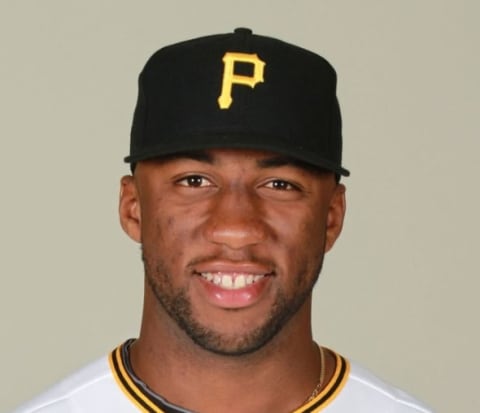
53. Mel Rojas, Jr., OF
Rojas comes from a very long line of baseball in his family. He’s the great-nephew of the Alou brothers, which obviously means his father is the cousin of Moises Alou. His father, Mel Rojas, was a closer with the Montreal Expos in the early 1990s.
Rojas has always had tremendous raw tools, exhibiting power and speed along with excellent defensive skills both in range and arm. The Braves acquired Rojas for cash from the Pirates this year after he’d languished with their AAA team for three summers without cracking the big league roster.
Rojas was dropped down to AA Mississippi initially with the Braves, and when the Braves called up a number of Gwinnett players to Atlanta, Rojas got the call to Gwinnett. With Gwinnett, he was one of the better hitters in the entire Braves minor league system in the second half of the season.
After he was acquired, Rojas posted a .261/.330/.445 line between Mississippi and Gwinnett with 12 home runs and 12 steals. He posted an .840 OPS and 10 of those home runs with Gwinnett in just 64 games.
Rojas is no longer a center fielder, but he handles right field just fine. His arm is above-average, and his range is still quite good, albeit not elite by any means.
Rojas is 27 and will be a minor league free agent, but he reportedly enjoyed his time with the organization, and I would enjoy seeing the team bring him back to give him a shot working in the outfield as a switch-hitting option off the bench in the big leagues possibly in 2017.
Next: #52 & #51
52. Lucas Herbert, C
More from Tomahawk Take
- Atlanta Braves 2012 Prospect Review: Joey Terdoslavich
- Braves News: Braves sign Fuentes, Andruw’s HOF candidacy, more
- The Weakest Braves Homers Since 2015
- Atlanta Braves Sign Joshua Fuentes to Minor League Deal
- Braves News: New Year’s Eve comes with several questions about the 2023 Braves
The high school catcher of one of the top 10 prospects in the Braves system, Herbert was selected out of high school in the same draft as teammate
Kolby Allard, picked in the 2nd round of the 2015 draft. He only made 5 plate appearances before a significant knee injury ended his season. However, he had flashed some offensive potential that had catching-starving Braves prospect hounds drooling over Herbert in the 2015-2016 offseason.
While Herbert’s defensive skills were undeniable in 2016, his aggressive promotion to Rome certainly did no favors to his bat. Herbert hit .185/.234/.278 on the season with 6 home runs and an 18/96 BB/K ratio over 367 plate appearances.
While his offense was rough to say the least, Herbert did show some signs to dream on for sure. There is legit power there. When Herbert gets a hold of a ball, it simply explodes off of his bat.
Herbert’s defense is best seen in his ability to move laterally, and he is incredibly impressive removing the mask and moving after foul balls, showing extreme athleticism in those moments that were so athletic that they caught notice.
However, he also struggled with blocking pitches. That could be part of the extreme breaking pitches that the elite arms in the Rome staff exhibited, and I’m certainly willing to allow him some leeway for that, but there were a number of pitches that he had a big delay in finally dropping to his knees.
Herbert has an excellent arm and good footwork in the run game.
I would personally like to see Herbert get another season in Rome, but I would wager he gets to move to high-A along with the pitching staff that is used to his handling in 2017. When (or if) his bat develops is going to be anyone’s guess.
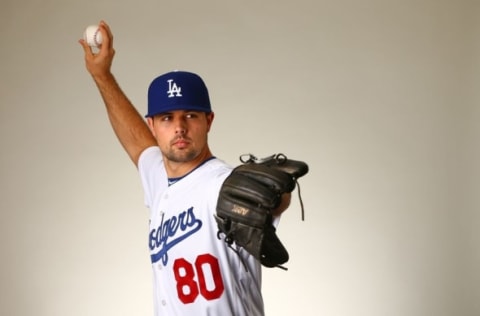
51. Caleb Dirks, RHP
Dirks was originally drafted by the Braves in 2014 in the 15th round out of California Baptist University. After a successful first season in the organization, Dirks was throwing very well in 2015 when the Braves traded him to the Dodgers in exchange for international slot money in order to sign Cristian Pache and Derian Cruz (among others).
Dirks was re-acquired by the Braves (along with Phil Pfeifer) this summer in the deal that sent Bud Norris and Dian Toscano to the Dodgers. He was a key piece in the Mississippi bullpen late in the season, posting a line of 0.91 ERA, 0.98 WHIP, and 11/32 BB/K ratio over 29 2/3 innings.
Dirks has a delayed delivery that helps his stuff play up and disrupts a hitter’s timing. He has a fastball that works up to 96 without a lot of movement, but that he does locate very well.
Dirks works with two off speed pitches. His primary is a slider that has minimal bite but is also his most inconsistent pitch. His change is an impressive pitch, at least in my viewings, as a pitch that worked against both hands with some cut action to the pitch.
Dirks’ stuff is maybe not stuff that is “back-end” stuff, but he does very well controlling the pitches, so he plays up stuff that isn’t as dominant in his results. I’d see him as a middle relief guy at the big league level, but he has a good shot of seeing some major league time in 2017 after likely starting in Gwinnett.
Next: Braves Minor League Database
Now we’ve covered half of the list! Come back this afternoon to see the start of the second half of the list!!